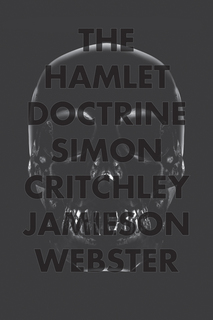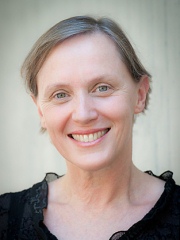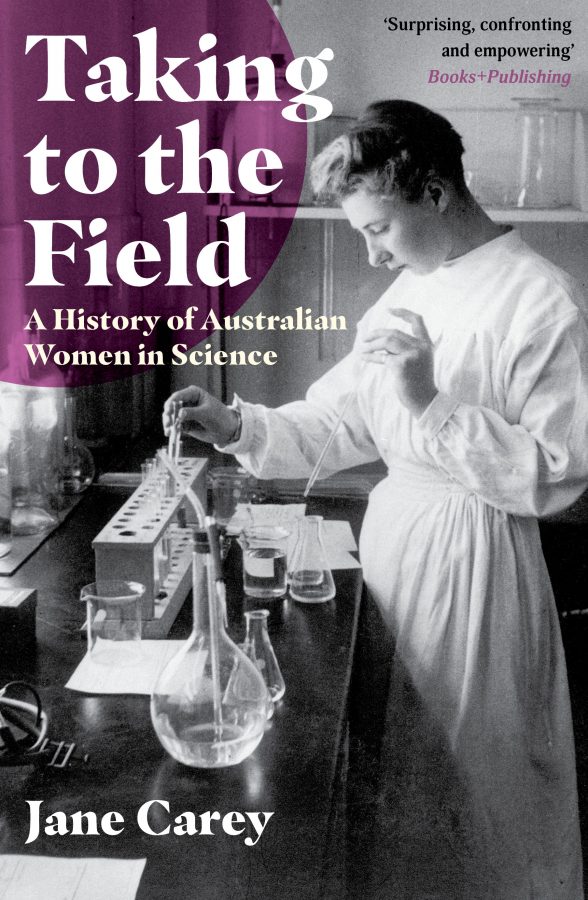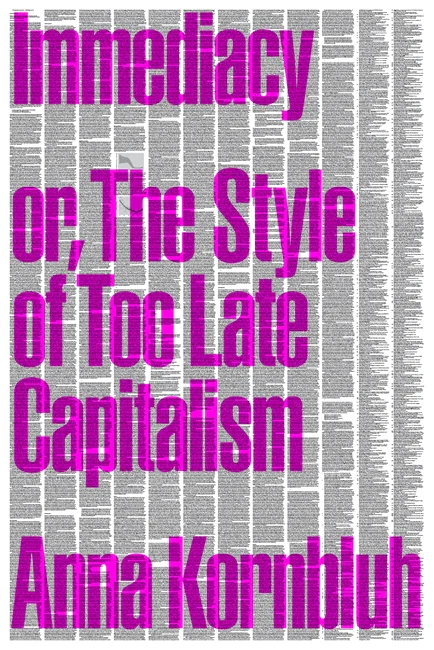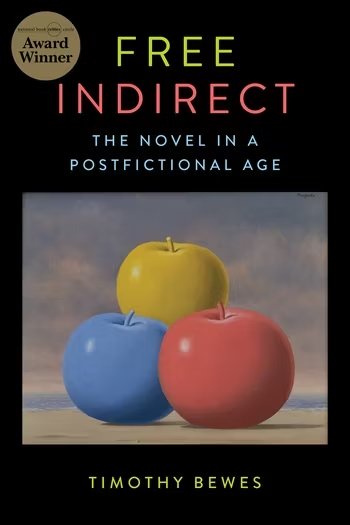The Inside Outsiders: The Hamlet Doctrine
I have two books on my table. Simon Critchley’s and Jamieson Webster’s The Hamlet Doctrine and a draft folio of the soon to be published An Outsider’s Art: The Paintings of Kathleen Mary Fallon. The images from this last work jump from the page with an oddness and energy that leave me with no alternative but to take them in on their own terms. Fallon’s schismatic tumbling figures of pure graphic energy leave me breathless and excited; The Hamlet Doctrine has quite the opposite effect. Despite pacey writing and jazzy argument, it tracks familiar paths right up until its final pages. Perhaps if the authors had not professed the newness, rawness and rashness of what was coming on the first page, I might have settled down to read a very interesting – albeit a bit gossipy – take on key philosophical and psychoanalytic interpretations of Hamlet. Instead, I grew steadily more uneasy as the book progressed.
Don’t get me wrong; this is not a bad book. In many ways, it is a remarkable book. But, at least in its starting premise, it is wrong-footed. It promises to deliver an ‘outsider’reading of Hamlet, then delivers its readers back into the thickets of philosophical and psychoanalytical argument. With Fallon’s work in front of me, the uniqueness of outsider art and thought is tangible. The rawness of her images (art brut in the full sense of the term) bring to mind the creative, chaotic energy of some of the outsidersof my childhood – my great uncle, for example, who worked his way through Capital, then set off to the mountains with a horse and dray to fell timber and build a cultural centre for working men in a village thrown up around a pit-top. He and his world of vivid thinkers and creators have disappeared, but they were not a Romantic fantasy. They were outsiders: all uneducated, all a little ‘touched’, all contriving to fashion a philosophy and an art unaided by the cultured worlds they were excluded from. The Hamlet Doctrine comes from a very different place. Steeped in centuries of scholarship, from Plato to Lacan, its line-up of male, white, Western thinkers is a lamella of critical theory. No outsider could make his or her way through this book.
Why, then, would insiders like Simon Critchley (a celebrated philosopher at the New School in New York) and Jamieson Webster (a New York psychoanalyst), try to claim they have produced a work of ‘outsider’ interpretation? Outsider art and thought is anathema to the contemporary university, however critical theory might fashion itself in the chic tertiary institutions of the rich West. Jean Dubuffet identified three characteristics common to all outsider art: its makers are outsiders, either mentally or socially; it is conceived outside cultural institutions and without regard to its reception by art worlds; and it stems from personal inventiveness in isolation from the techniques, subjects and systems of inherited artistic worlds.
To be fair, Critchley and Webster are not claiming to be outsider artists, but they are trying to hitch a ride on the idea of outsider creativity in order to claim its raw inventiveness as their own. They want to be like Virginia Woolf, isolated by illness and alone with Shakespeare: ‘Illness, in its kingly sublimity, sweeps all that aside and leaves nothing but Shakespeare and oneself.’ Rather than displaying a naive disregard for their work’s reception, they are carefully working a conceit. Three references to outsiders and four to rashness on the first page! They claim Virginia Woolf (note the reference to madness) as their fellow traveller: ‘Rashness is one of the properties of illness – outlaws that we are – and it is rashness we need in reading Shakespeare.’
Most of The Hamlet Doctrine, however, is taken up with exegeses of key philosophical and psychoanalytic interpretations of Hamlet. For readers familiar with continental philosophy and critical theory, there is much to engage with here. The language of The Hamlet Doctrine is fast and fun. Hamlet ‘has lost his mojo’; his death is ‘caused by the unfortunate switcheroo of swords’. But neither verbal play nor the book’s subjects – Carl Schmitt, Walter Benjamin, G. W. F. Hegel, Friedrich Nietzsche, Sigmund Freud and Jacques Lacan – make this an outsider work. In a fast and easy use of the term, Schmitt and Benjamin are framed as fellow ‘outsiders’. It is unclear why. But the analysis of their criss-crossing debates over the relationship between history and art is often brilliant, particularly in the way Critchley and Webster politically contextualise both the play and its philosophical interpretations.
Questions abound. Why do neither Benjamin nor Schmitt think Hamlet is a Trauerspiel (‘mourning play’)? How do they differently understand the concept of sovereignty, conceived by Schmitt as the capacity to decide on the state of exception, in relation to Hamlet’s radical indecisiveness? The authors side with Schmitt when Benjamin’s opposition between Trauerspiel and tragedy is utterly foggy. But then they declare Schmitt flat-footed in his insistence that the historical back-story is the sustaining riddle of Hamlet. Then they seem to concur with Hegel (another outsider?) against an ‘Eyore-esque wallowing in misery’ implied in both tragedy and Trauerspiel.
This philosophical soft-shoe shuffling makes it hard to keep in sight The Hamlet Doctrine’s central contention. Developed somewhat tangentially via a series of anecdotes, digressions and elaborations, the argument is that Hamlet does not mature through the course of the play into a disinterested tragic hero. He does not become Harold Bloom’s ‘truer Hamlet that compels a universal love’. Rather, Hamlet remains a steadfastly nasty guy whose behaviour betrays ‘a certain ugly interest rather than a beautiful disinterest’. This nastiness, Critchley and Webster contend, has eluded generations of critics in search of Shakespeare’s alleged humanism.
Schmitt’s, Benjamin’s and Hegel’s interpretations of Hamlet are bounced off each other, creating a rather rocky path to the idea that Hamlet’s disgust should disgust us. Yet the authors often appear more engaged with biography than by their argument. Schmitt’s and Freud’s conjectures about the biographical origins of Hamlet are dismissed: Freud’s search for the ‘real Shakespeare’ is portrayed as a wild goose chase; while Schmitt’s interpretation is condemned for its ‘plodding flat footedness’. But this same search for biographical grounding preoccupies much of the text. For Critchley and Webster, what links Schmitt and Benjamin is not just their debates about the relationship between history, biography and art, but their biographies, which reveal forms of social exclusion. Similarly, Freud’s biography looms large in the book’s interpretation of his writings on Hamlet.
Once the authors turn their attention to Freud and Lacan, however, the writing becomes much more ardent. Critchley and Webster tell the backstories of the various psychoanalytic dramas that have been played out through Hamlet. The significance of these stories is not immediately clear, but they make for gripping reading. Freud’s struggles with Wilhelm Fliess and Carl Jung – precursors to the Oedipal dramas of parricide and infanticide that plague psychoanalytic institutions – are woven into the drama of Freud’s discovery of the Oedipus complex in Hamlet. Freud excitedly explains to Fliess that Hamlet ‘suffers from the obscure memory that he himself had contemplated the same deed against his father out of passion for his mother’ and is thus unable to act against a man who has fulfilled his own wish. The enigma of Hamlet’s indecisiveness leads Freud to his theory of the inhibiting consequences of the Oedipus complex, and ultimately to his unlocking the mystery of the human psyche – that is, to the realisation that our own desires are unknown to us. Hamlet, moreover, keeps bubbling up at key moments in psychoanalytic history. Not only is Hamlet the inspiration for psychoanalytic theory, the evolution of psychoanalysis has been played out in constant dialogue with Hamlet’s character and language. Freud never stops identifying with Hamlet as he is developing his theories of the unconscious life of dreams, and of narcissism, melancholia, sublimation and debasement.
It should be clear by now that in this book we are never ‘alone’ with Shakespeare, but rather abuzz with Hamlet’s life in philosophy and psychoanalysis. And all this honey – all these stories and digressions – leads to the Queen Bee himself: Jacques Lacan. Following Lacan, Critchley and Webster want to distance themselves from generations of applied and plodding psychoanalytic literary criticism:
Give Hamlet a little more credit dear psychoanalysts! Hamlet’s powerful reflexivity, like a patient’s, will always be ten steps ahead of any banal game of interpretation. It takes a different act of reading, something other than this game of scholarship and interpretation, to get inside the play.
Famously, Lacan inverted psychoanalytic attempts to psychoanalyse literary characters by demonstrating in a succession of literary readings that literary works can be read for what they can tell psychoanalysts about the structure of desire. By extension, he argued, psychoanalysts should listen to Shakespeare rather than attempt, as Freud did, to find proof of his Oedipus complex in Hamlet’s dithering. Critchley and Webster gloss this:
It is not a question of putting Hamlet on the couch, which in any case would be weirdly anachronistic, but rather to hear something in Hamlet that allows us to put psychoanalysis on the couch and to the test.
As a young reader of Lacan and literature, what I found compelling in Lacan’s literary orientation was his openness to the idea that we might find something strange and enigmatic in a literary work, something that exceeded any theoretical blueprint we might bring to it. In an intellectual environment increasingly dominated by theoretical negations of the power of literary works to articulate unsayable truths, Lacan countered with a theory of how literature opens a door to language’s ability to lead a reader to confront his or her subjectivity at its most intimate and compelling. As Jean-Michel Rabaté writes:
This is why Lacan’s lifelong confrontation with literature has always hinged on basic and almost naive questions, such as why do we write? Why do we read? What touches us in this apparently simple process? Why do we enjoy reading certain texts and hate other texts? What is the psychic economy implied by these acts? Where and how are our bodies touched by the ‘letters’ of literature?
I would contend, moreover, that this implies being open to the possibility of finding something in Hamlet that is beyond Lacan. What unfolds in The Hamlet Doctrine, however, is a reading saturated by Lacan. There is nothing in this reading that opens up anything beyond Lacan’s theory of desire. No residue, no excess, no language that cannot find an explanation within Lacanian thinking.
But if, as Critchley and Webster say, ‘the world of the word is the life of the world’, might the word itself have a say? What might a theoretical work of literary criticism be that did not saturate a literary text with its meaning? Might this be what is needed to hear the life of the world? And isn’t this why the works of outsiders speak to us with such intensity: because they come from afar, seeing anew, unhindered by the weight of inherited forms.
Critchley and Webster read Hamlet from deep inside the Lacanian corpus and, as I have said, they do this rather brilliantly. Of particular value is their illumination of the relation between Lacan’s Seminar Six and Seminar Seven, as they develop the idea that Lacan’s approach to Ophelia foreshadows his later conception of Antigone as the ethical heroine at the centre of his ‘ethics of desire’. Like Antigone, who refuses any consideration of her own good and pursues her desire implacably without regard for the damage it will do her, Ophelia remains true to her desire up until madness and death. Everyone in the play treats Ophelia as nothing more than an object of exchange, but she insists on the veracity of her love and makes her act (suicide) speak of the nothing she has been reduced to: ‘Her only option in this language of exchange is suicide. She declares herself bankrupt and expires.’
As this reading unfolds, the book’s argument finally begins to have substance. Hamlet is viewed through the Lacanian lens as someone whose love takes the form of debasement and whose desire is acted out, but never enacted. This Hamlet is a character who, unlike Oedipus, has failed to confront his desire for his mother, is unable to mourn her loss, and is therefore consigned to experiencing his desire exclusively as the desire to be her desire. Hence, he is left with only ‘words, words, words’. And, unlike Antigone, Hamlet cannot carve out a place for his desire. His tragedy – the tragedy of desire – is to be true to his desire only when he is already at the threshold of death. Hamlet dismisses Ophelia as an object of desire, but in doing this he reveals a particularly disfiguring symptom: the tendency to debase the object in place of desire. As Lacan writes of Ophelia:
She is no longer the reference-point for a life that Hamlet condemns in its essence. In short, what is taking place here is the destruction and loss of the object. For the subject the object appears, if I may put it this way, on the outside. The subject is no longer the object: he rejects it with all the force of his being and will not find it again until he sacrifices himself.
A-ha! At last we have a clue to the ‘outside’ theme that runs through this book. It is not that the authors are outsiders, or that their line-up of philosophers and psychoanalysts are outsiders, but rather that Ophelia, debased by Hamlet and radically excluded from his world, appears to us from this limit point of a radical outside.
Again, there is an echo of Antigone here, and of the way Lacan will make of her a supreme example of sublimation. Antigone’s beauty explodes, Lacan argues, at the moment when, already symbolically dead, she moves towards her death. She becomes an image of such intensity that all other images and fantasies are momentarily erased. Her beauty at this moment is an effect of blindness on the far side of the limit of what can be observed, creating a rapport between her audience and what Freud called the death drive. Hamlet’s cruel debasement of Ophelia makes her a similar figure of impossibility, realising desire in its negative form and creating, as Critchley and Webster argue, ‘a second encounter with death that allows something of Hamlet’s own mourning to take place.
But we cannot quite solve the riddle of this book until its final pages when the authors clinch their argument in a final bevy of ideas – Nietzsche’s linking of Ophelia’s fate to her perception of the horror and absurdity of existence; James Joyce’s ponderings of the cycle of violence between fathers and sons; Heine Muller’s creation of Ophelia as a revolutionary heroine; a repudiation of Kant’s idea that the monstrous has no place in the realm of aesthetics, and more. We arrive, rather breathlessly, at the idea that reading Hamlet in terms of ethical authenticity (the humanist line of criticism) forecloses the experience of shame at the heart of the play.
Shame, Critchley and Webster contend, accompanies the play’s myriad lack of actions, from Gertrude’s failure to mourn to Hamlet’s failure to revenge his father’s death. All the ugly self-interestedness, all the political machinations and the disjointedness of Hamlet’s world, produce a lesson in shame. This shame is not an object revealed distinctly and with clarity:
Its subject is exterior to us. It evokes something blushingly powerful but opaque. It moves on the outside across surfaces like fire in grass.
Shame ‘is a moment of seeing oneself from the outside in the manner of Hamlet’s soliloquies.’ Its effect is to register internally the division of the self: the self in its mortality and its limit. It comes from the outside but shatters the inside – shame, the outside insider. Enfin!
There is one final twist to this book. The authors return to their initial claim that they have written this book as outsiders, but by the end this term is imbued with idealised meanings. Not least, the brilliant éclat of Antigone, the heroic truthfulness of Ophelia’s love-act, and the blazing light of shame itself. They claim to have written this book for love, as lovers, as outsiders, and for shame. But perhaps a more limited claim might be that, from deep inside the machinery of Western critical thinking, The Hamlet Doctrine gives up glimpses and glimmers of something raw and real beyond it.
References
Harold Bloom, Hamlet: Poem Unlimited (Riverhead Books, 2003).
Jean Dubuffet, ‘L’art Brut préferé aux art culturels,’ cited in Michel Thévoz, Art Brut,translated by James Emmons (Booking International, 1995).
Sigmund Freud, ‘Letter to Fliess October 15, 1897,’ The Complete Letters of Sigmund Freud to Wilhelm Fliess, 1887-1904 (Harvard University Press, 1985).
Jean-Michel Rabaté, Jacques Lacan and the Subject of Literature (Palgrave, 2001).
Virginia Woolf, ‘On Being Ill,’ Selected Essays, edited by David Bradshaw (Oxford University Press, 2008).
